Península de Setúbal | 赛图巴尔半岛

![]()
Península de Setúbal
In the south of Lisbon lies the region where a great sweet wine is born: the Setúbal Moscatel.
We are here on sandy land (in the plain) separated from the sea by the Serra da Arrábida (with clay-limestone soils), an authentic a wall protecting and moulding the wines from this region.
Reds were characterised for decades by the Castelão caste, which gives rise to good quality wines that endure their time in the cellar well, are generally smooth and well-suited for gastronomic use. As for whites, batches mainly contain several castes, usually including Fernão Pires and Moscatel; other varieties from outside the region complement them, such as Chardonnay and Sauvignon Blanc. More recently, other varieties have been introduced. Some have been Portuguese, such as the Touriga Nacional and the Tinta Roriz; others, called international castes, such as Cabernet Sauvignon, Syrah, Merlot among the reds and whites already mentioned.
History has always advised that wines from sandy soils should be kept separate from wines from the mountain; the best Moscatel wines originate on the slopes of the mountain range, in limestone soil, where Chardonnay also thrives. On the other hand, on the flats of the so called Palmela Region, the Castelão variety has been shining since the 19th century. Towards the end of the 19th century, near a town called Poceirão, the largest continuous vineyard in the world was to be found; as late as the 1960s, there was a vineyard with 2000 ha of continuous land cultivated with vines.
Nowadays, production is centred on three large companies and two cooperative wine cellars. In addition, a varied group of producers is trying out new varieties, some of them brought from the neighbouring Alentejo.
The area is also known for its cheese, made from sheep’s milk. It is a product that enjoys great prestige, and its production follows the same technique as other famous sheep cheeses in Portugal: that from Serra da Estrela (in the Beira Alta) and from Serpa (from the Alentejo).
Setúbal Moscatel completes the trio of sweet Portuguese wines. Produced on the Setubal peninsula, from the Moscatel variety from Alexandria, it is a wine that like all other sweet wines is “mellowed” during the fermentation process with aguardente, and then left for many months in post-fermentation maceration. This results in a very aromatic wine that lasts a long time in the cellar.
Besides this variety, the Moscatel Roxo is also grown, although in tiny quantities; it is a superior variety and is currently being recovered by the region’s companies.
Production tradition for this sweet wine goes back to the 18th century. Since then, Setubal has been able to retain a high standard of quality, making its Moscatel different from others that are produced in every other country in the Mediterranean basin.
Moscatel is also produced in the Douro region (Favaios and Alijo),from the Moscatel Galego variety.
![]()
赛图巴尔半岛
这个产区坐落在首都里斯本以南。从这里诞生了一种著名的加强葡萄酒:塞图巴尔麝香葡萄酒。
我们所在的地方是被阿拉比达山与大海分开的沙土地(平原),这座山是一道真正的自然围墙,保护、塑造了这个产区的葡萄酒。数十年以来,本产区的红酒特点是使用卡斯特朗葡萄,使用它酿造出了品质优良的红葡萄酒,能够在地下酒窖保存多年。一般来说这些红酒都非常柔和,非常适合美食。而这个产区的白葡萄酒则是使用多个品种的混合葡萄酒占主导地位,一般是在费尔南•皮勒斯和麝香葡萄之间,然后使用产区之外的霞多丽或是长相思等其他品种作为补充。最近,更多的品种被引入这个产区,有些是葡萄牙品种,如国产多丽嘉,红色罗丽斯;另一些则被称为国际品种,如红酒中的赤霞珠,西拉和梅洛葡萄,以及上面提到的白葡萄酒中的那些品种。
历史总是倾向于将沙土地所产的葡萄酒和山上所产的葡萄酒分开;最好的麝香葡萄酒总是来自山坡地区,这里的石灰质土地也非常适合霞多丽的生产。而从19世纪开始,在被称为帕尔梅拉地区的平坦土地上卡斯特朗葡萄就闪耀着光芒。那里, 19世纪末在一个叫波塞朗的村落有世界上最大的连续葡萄园,直至20世纪六十年代还有一个连续植有2000公顷葡萄植株的葡萄园。
现在,这个产区的葡萄酒酿造集中于三个大型企业和两个联合酒窖之手;此外还有一群不同的酿造商,他们正在试验使用新的品种, 其中的一些品种来自邻近的阿连特茹。
这个地区还以生产奶酪而闻名,奶酪使用的是绵羊奶。它是这个地区极具声望的产品,生产时遵循葡萄牙其他著名羊奶酪的制作技术,即埃斯特雷拉山奶酪(上贝拉地区)和塞尔帕奶酪(阿连特茹地区)的技术。
塞图巴尔麝香葡萄酒是葡萄牙加强葡萄酒三剑客之一,其产地是塞图巴尔半岛,使用的品种是亚历山德利亚麝香葡萄。这是一种与其他加强葡萄酒一样,在中途被加入葡萄烧酒中断发酵的葡萄酒,在经过许多个月的发酵后浸皮之后,就得到了一款非常芳香,在地下酒窖中长期存储的葡萄酒。
除了亚历山德利亚麝香葡萄,这个产区也种植品质更高的紫色麝香葡萄,尽管数量很少。一些本产区的企业正在恢复这种葡萄的种植。
这个产区酿造加强葡萄酒的历史可以追溯到18世纪,从那时开始,塞图巴尔地区就知道怎样保持高品质,让自己酿造的麝香葡萄酒有别于地中海盆地其他国家的麝香葡萄酒。
在杜罗河产区(法瓦尤斯和阿里若)也酿造麝香葡萄酒,但使用的是加里西亚麝香葡萄。

